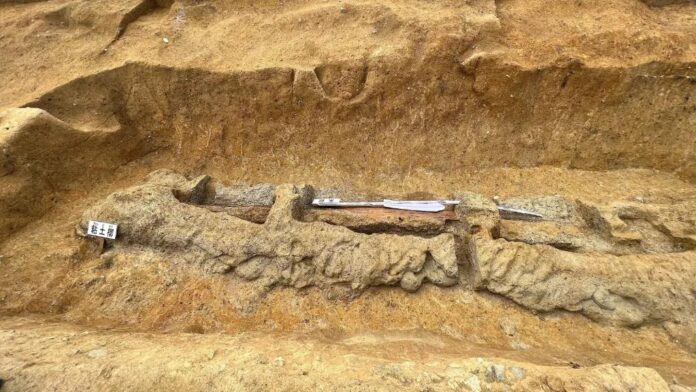Archaeologists working in Japan have unearthed a massively oversized sword in a 1,600-year-old burial site, leading researchers to believe that the unwieldy weapon was buried with the deceased to ward off evil spirits in the afterlife. Measuring a startling 7.5 feet (2.3 meters), the iron sword was discovered as part of a dig at the Tomoio Maruyama burial mound, located west of the city of Nara.
The sword is distinctive in its length and its design. In addition to the exaggerated size, far too large for even a burly individual to use for self-defense against a foe, the sword is also designed with an undulating blade pattern, classified in the “dakō” style.

The iron dakō sword uncovered at the Tomio Maruyama burial mound in Nara, western Japan. Photo: Archaeological Institute of Kashihara, Nara.
Other wavy-bladed weapons dating from the 4th century have been found, but according to Riku Murase, a researcher with the Nara City Archaeological Research Center, this one is “twice as big as any other sword found so far” in the country. Speaking to which first reported the discovery last month, Murase said: “It was so long I doubted it was true.”
Stefan Maeder, an archaeologist specializing in ancient swords told the outlet that the large dakō is rare, adding “they are prestigious objects of high society” that served a ceremonial purpose.

An X-ray image of the sword. Photo: Archaeological Institute of Kashihara, Nara.
The famed Tomoio Maruyama burial mound has yielded other impressive discoveries including iron farming tools, utensils, and copper containers. Likely the final resting place of a member of the extended imperial Yamato family, the burial chamber—which measures more than 350-feet across and 32-feet tall—contained a coffin, but no human remains. There may be more than 160,000 of these burial mounds, or “kofuns” around Japan, though most are significantly smaller than this one in Nara.
More Trending Stories:

























